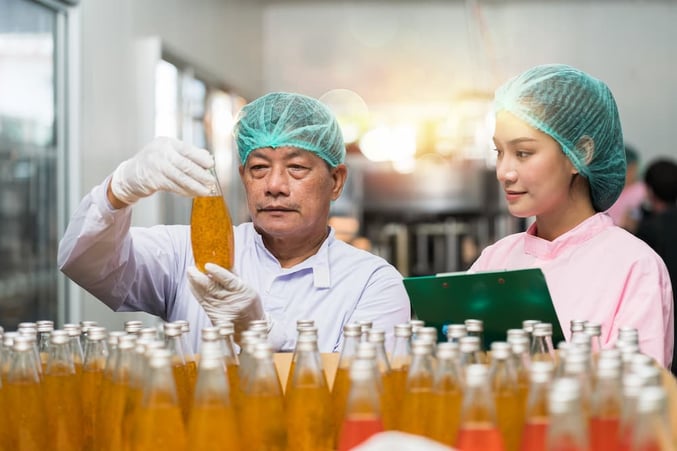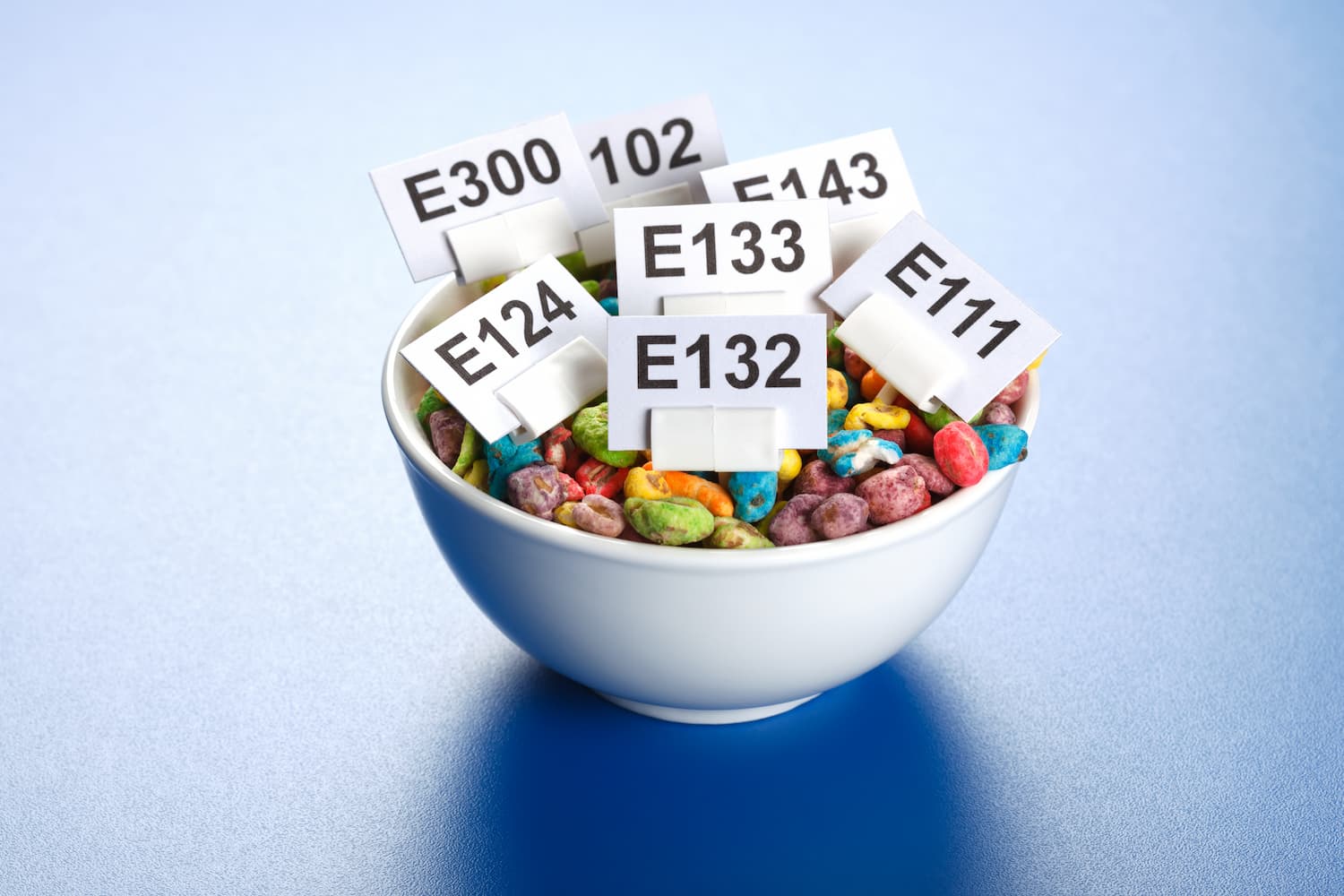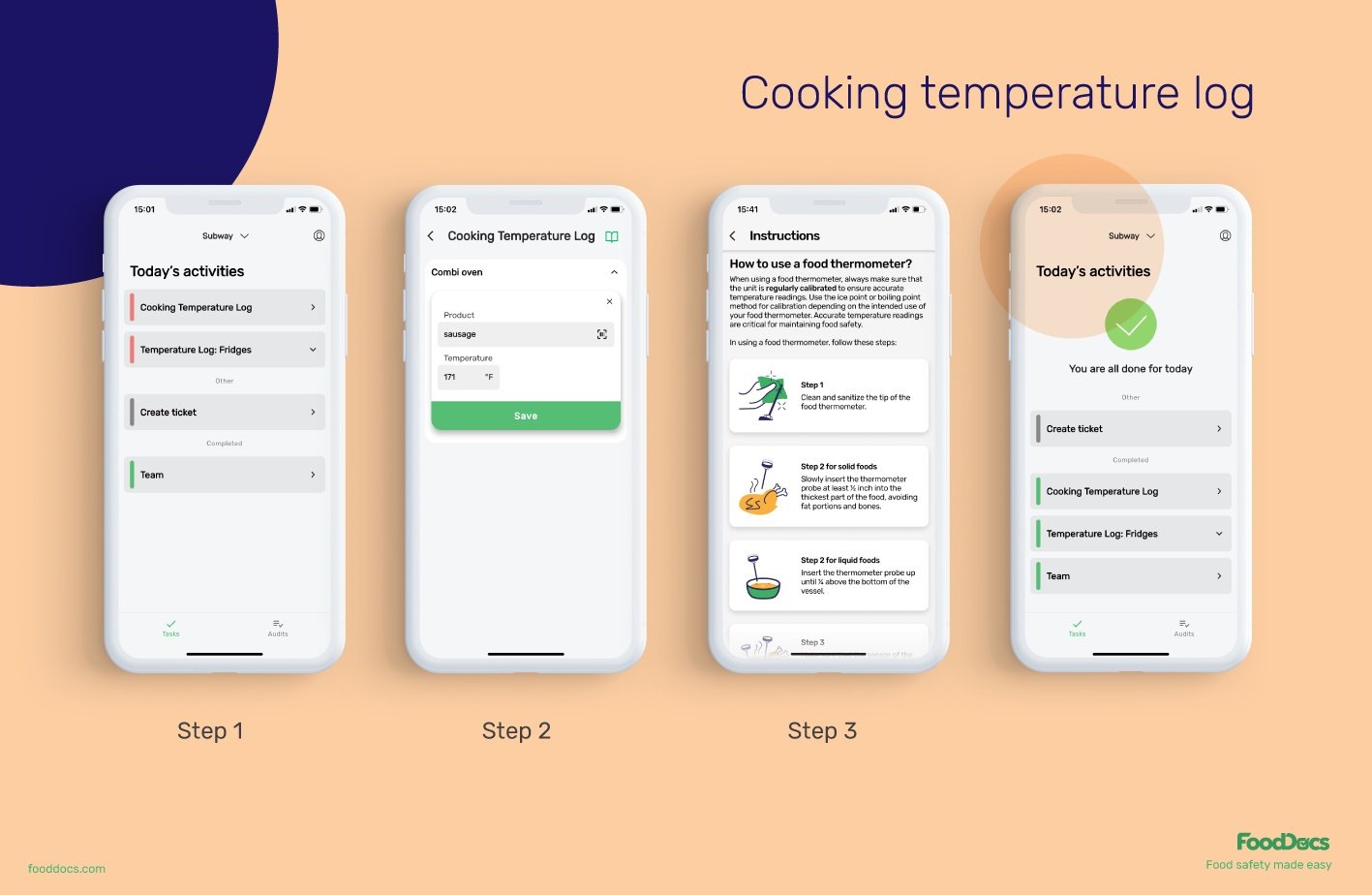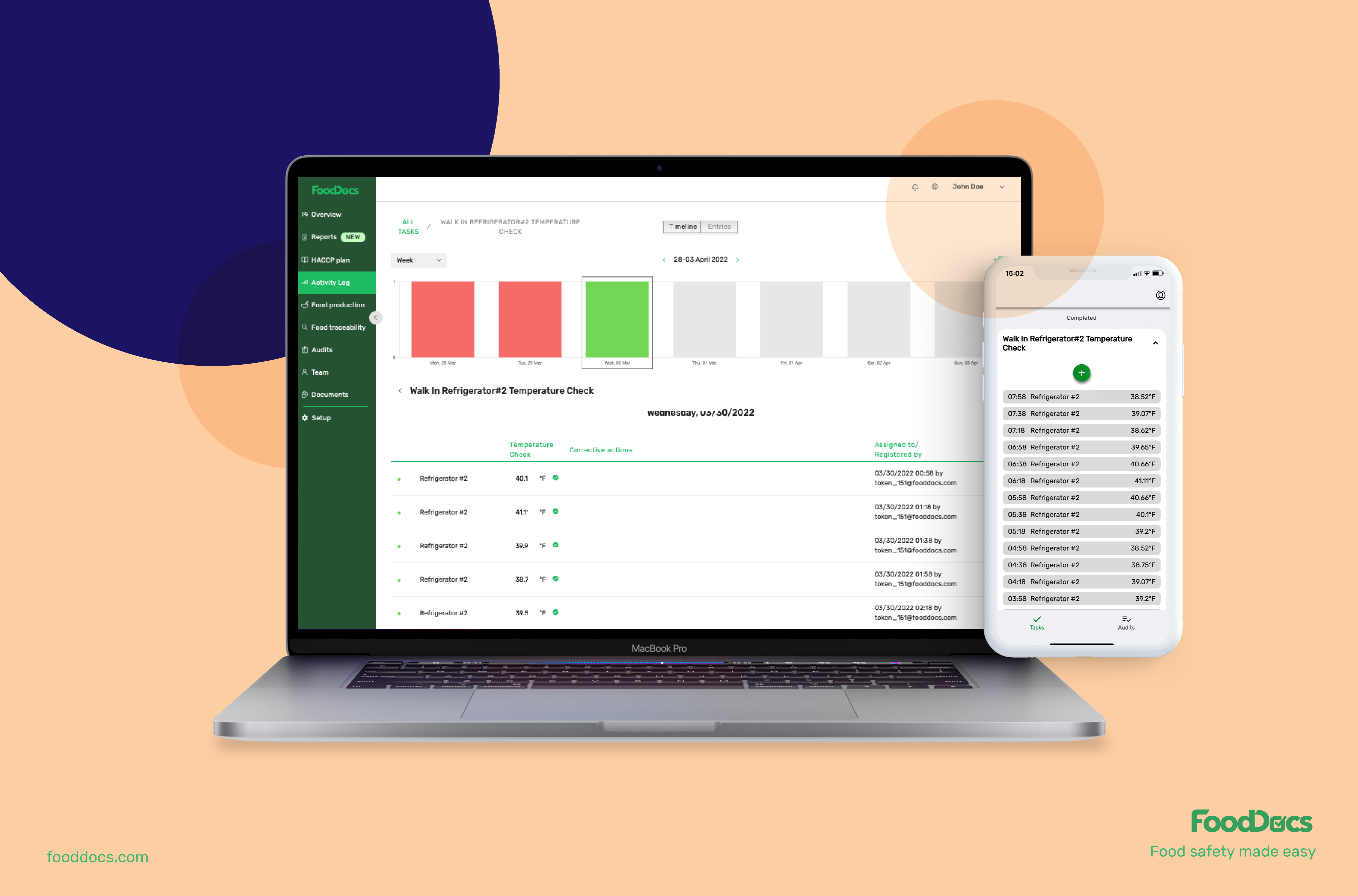Why Is Food Safety Important In Healthcare? Healthcare Leaders Guide
Learn challenges healthcare foodservice teams face today and key food safety practices to protect vulnerable patients. Get a free healthcare leader...
Food safety standards provide points of assessment for safe food production and distribution throughout the food supply chain.
Food safety standards vary depending on the location of a food business. Laws that lay out food safety standards are always complex, and most acts and food regulations affecting the food industry are no exception to this fact.
Despite this, it is every food business owner's responsibility to familiarize themselves with food safety standards. These standards are essential elements of every food business operation to protect public health from food safety risks while serving quality foods. Some standards and food safety requirements are crafted to address food safety issues before they even occur.
Food safety standards are interpreted differently in each country.
All food businesses, regardless of business nature, must follow food safety standards for the protection of public health.
FoodDocs' food safety management software can your team comply with food safety standards whether you're located in the United States, Canada, United Kingdom, or Australia!
Different countries have different interpretations of what is safe for their constituents. The differences may be based on lifestyle, tradition, quality of food ingredients, and scientific knowledge.
Most food safety standards are mediated by different food safety agencies, and they always consult higher bodies, such as the Codex Alimentarius Commission, for sound decisions. Food handlers are expected to know and understand regulatory requirements and standards to maintain compliance and continuously operate without causing any problems.
How important are food safety standards, and how do they differ based on location? Keep reading to learn more!
Food safety standards are a set of requirements that foods and food manufacturers must meet to produce and serve safe food products for human consumption. Standards regulate food parameters that may affect the safety of food, such as permissible food additives, freshness, composition, and total bacterial count.
Standards for food safety are established based on scientific evidence and risk assessment. They aim to prevent the occurrence of different foodborne illnesses. They are applied throughout the entire food supply chain to ensure that raw materials are being produced safely, as well as the final products.
The current food safety standards adopted by a country may vary depending on its state. One of the most prominent collections of international standards recognized globally is the Codex Alimentarius. This document is used all over the world and interpreted to fit a country's scheme.

Food safety standards help food companies, such as hotels, restaurants, catering companies, cafés, and retailers, prepare and serve food safely and prevent foodborne illnesses. It is a moral, legal, and commercial obligation to provide safe food to customers.
Your business reputation relies on your customer's trust to serve safer quality food. If cases of food poisoning from consuming your egg salad sandwich, sushi, oysters, or steamed mussels are reported, you will not only lose customers and your reputation but may lose your food permit, and fines and legal implications may occur.
Following food safety standards and proper food safety practices provides the following benefits and results:
High standards of personal hygiene are essential to prevent food contamination. Awareness of food safety legislation can be improved through basic food safety training from regulatory agencies, where the laws to be implemented are also introduced to employees for the production of safe food.
Supervisors have a key role in successfully implementing a comprehensive food safety management system and promoting a positive food safety culture to ensure a high level of protection.
The presence of a food safety management system is key to ensuring that every food safety standard is complied with religiously. At FoodDocs, we took this task to the next level and created a digital solution to make compliance easier and more accessible for all food processors and businesses.
Our solution can automatically create an intuitive digital Food Safety Management System that can help you ensure that every food safety task is recorded and done on time.

Although different countries may have different sets of food safety standards, some organizations evaluate the performance of different countries.
One of the most comprehensive lists of countries that have the highest food safety standards comes from the Economist Impact Global Food Security Index (GFSI).
With the goal of including regions across North America, Latin America, Europe, Asia Pacific, Middle East and North Africa, as well as Sub-Saharan Africa, Economist Impact selects the 113 countries in the index based on three things:
It then looks at those countries' food products' affordability, availability, sustainability, quality, and safety.
The latest Economist Impact Global Food Security Index 2022 report ranked 113 countries, with the 20 best-performing countries being the following:
| Rank / 113 | Country | Score / 100 (100 = most favorable) |
| 1 | Finland | 83.7 |
| 2 | Ireland | 81.7 |
| 3 | Norway | 80.5 |
| 4 | France | 80.2 |
| 5 | Netherlands | 80.1 |
| 6 | Japan | 79.5 |
| =7 | Canada | 79.1 |
| =7 | Sweden | 79.1 |
| 9 | United Kingdom | 78.8 |
| 10 | Portugal | 78.7 |
| 11 | Switzerland | 78.2 |
| 12 | Austria | 78.1 |
| 13 | United States | 78.0 |
| =14 | Denmark | 77.8 |
| =14 | New Zealand | 77.8 |
| 16 | Czech Republic | 77.7 |
| 17 | Belgium | 77.5 |
| 18 | Costa Rica | 77.4 |
| 19 | Germany | 77.0 |
| 20 | Spain | 75.7 |
Compared to 2012, when the Economist Impact GFSI Report was first published, the top 20 countries whose food safety improved significantly include:
| Rank / 113 | Country | Score / 100 (100 = most favorable) |
| 35 | Oman | +13.8 |
| =25 | China | +13.7 |
| 46 | Vietnam | +13.4 |
| =52 | Bolivia | +12.2 |
| 23 | United Arab Emirates | +12.0 |
| =41 | Saudi Arabia | +11.8 |
| 78 | Cambodia | +11.4 |
| 74 | Nepal | +11.1 |
| 33 | Uruguay | +10.9 |
| 89 | Burkina Faso | +10.7 |
| 90 | Tanzania | +10.2 |
| 82 | Kenya | +10.0 |
| 75 | Tajikistan | +9.6 |
| 29 | Bulgaria | +9.5 |
| 32 | Kazakhstan | +9.4 |
| 104 | Congo (Dem. Rep.) | +9.3 |
| 99 | Guinea | +9.3 |
| 57 | Morocco | +9.1 |
| 81 | Laos | +9.0 |
| =91 | Benin | +8.9 |
This ranking simply shows how different countries assess food safety hazards and address the present food safety issues.
Based on quality and safety alone, Canada and Denmark ranked first and second, respectively. The overall assessment of the GFSI for 2022 showed that there is a growing threat to the declining food environment, which may significantly affect food security.
As the authors of the 2022 report put it:
"The scores in the 2022 GFSI reflect a fragile global food system that is under immense pressure and facing some of its worst outcomes ever. Food prices and hunger are hitting record highs, while affordability is plummeting as shocks like the COVID-19 pandemic, armed conflict and climate change compound systemic stresses. These stresses and shocks pose risks that could get worse as threats to food security become the new normal.
Stakeholders in all parts of a complex and interconnected food system will need to work together to manage these risks and achieve the twin goals of resilience and sustainability."
Food must be kept safe and of good quality in the national and international trade supply chain. The industry is guided by many different internationally recognized food safety standards, such as the Codex Alimentarius and the Global Food Safety Initiative standards. These guidelines all aim to promote food hygiene and prevent food spoilage.
The organizations behind these international standards aim to create a harmonious food supply chain and provide a common ground for all food suppliers in dealing with food safety issues. The standards established by international organizations and governmental institutions are used in auditing food companies and ensuring compliance.
Each country often interprets food safety standards through laws and federal regulations. An example of such federal regulations is the Food Safety Modernization Act of 2011 in the U.S. This law contains several guidelines and standards aiming to address any concern about food safety risks as a proactive approach.
The American food regulation also describes how to establish risk-based preventive controls to achieve its objectives. In addition, in the case of the U.S., its federal agency, the FDA, releases the FDA Food Code, which is a set of regulations for food safety. This document serves as a safety guide for retail food establishments, manufacturing companies, and the food service industry for the production and sale of foods.
Most countries have federal governments regulate food safety policies and laws because state and local government levels are quite complicated and fragmented. As an outcome, the requirements for working and owning a food business usually vary from state to state.
Food laws aim to prevent problems that can cause foodborne illness and other harmful effects, such as the food import and export of adulterated products that may prove to be non-compliant with general food regulations in any context. Other food safety quality standards involve steps to limit the spread of infectious diseases in perishable foods, such as the following:

Every food business operator involved in the entire food chain, from farm to fork, shares equal responsibility on food safety matters and following food safety standards to ensure safer food for the public.
The government plays a vital role in creating food safety regulations, producing guides for food safety, and enforcing them for food protection. Food safety involves the control measures and conditions necessary to control contaminants in food and to protect consumers' health from any food safety issues such as harm, injury, or foodborne diseases.
Countries interpret food safety precautions to prevent the production of unsafe foods differently. This fact is affected by factors including the lifestyle of a country's residents, history of outbreaks, most commonly present food safety hazards, the vulnerability of consumers, and tradition.
Regulatory agencies and health departments gather information and base food safety laws on these factors in addition to research and scientific advice.
A good example of the difference between the US and European federal programs is that European food laws have a stricter approach towards food additive ingredients and chemical substances that are suspected of having carcinogenic effects on humans.
In the U.S., the use of the common food additive Potassium bromate KBrO3 (added to American-made bread products to make the dough rise higher and turn stark white) is still an acceptable practice. On the other hand, this ingredient is considered a food safety concern that has adverse effects on human health and is banned through food safety efforts in European countries, Canada, and Australia.
Another example is the European regulation that bans the production of chlorine-washed chickens, which is still an accepted operation in American food standards. Australian and Canadian food standards coincide with that of America in this sense. This means that chlorinated chicken and other chlorine-treated poultry produced in America cannot enter European countries.

To give you more information about the key differences between the national food safety standards of different countries, here is a quick look at their structures and some differences:
| American Food safety standards | UK Food safety standards | Canadian Food safety standards | Australian Food safety standards | |
| National food control systems, Federal agencies |
|
|||
| Main food safety standard/ law | Food Safety Modernization Act of 2011 (FSMA) | Food Safety Act of 1990 |
|
Australia New Zealand Food Standards Code |
| Common Allergenic ingredients | 9 common allergens (effective 2023): milk, egg, fish, shellfish, tree nuts, wheat, peanuts, soybeans, and sesame. | 14 common allergens: milk, egg, fish, crustaceans, molluscs, tree nuts, wheat, peanuts, soybeans, celery, lupin, sulfur dioxide, mustard, sesame |
11 common allergens: milk, egg, fish, crustaceans (inc molluscs), tree nuts, wheat (inc triticale), mustard peanuts, soybeans, sulfites, and sesame. |
9 common allergens: milk, egg, fish, shellfish, tree nuts, wheat, peanuts, soybeans, and sesame. |
| Chemical additives in food labelling and other information | The arrangement of additives is based on the amount quantity used and is labeled using their full names (e.g., Sodium benzoate) |
Approved additives must be listed in decreasing order of usage. The functionality of the additive must be included along with the assigned E number (e.g., Acidulant (E330)) |
Additives must be labeled by their acceptable common name in descending order by their proportion. | Additives must be declared in descending order of weight in use. They must be labeled using their class name followed by their food number (e.g., Color/ Food dye (150a)) |
| Labelling foods that have undergone genetic engineering | Foods must be labelled as bioengineered or have bioengineered ingredients. |
The label must indicate that the product is or contains Genetically Modified Organisms (GMO). |
Has no specific laws on labelling GMO products. | Genetically engineered ingredients in the food product must be labeled as "genetically modified" |
As food safety standards are very variable and differ from one location to another, some food processors may find it hard to build an efficient Food Safety Management System that will fit their operations. Standards for addressing concerns about food safety can be confusing without the help of an expert.
Luckily, FoodDocs is here to help you and your team address your food safety concerns. We can help you maintain your food safety compliance with your everyday operations.
Using our digital solution, you can get an automatically generated digital Food Safety Management System that is based on your location's standards and business operations in just 15 minutes.
All you need to do is answer a few questions describing your business operations and the nature of your operations to our system, and we can automatically create a digital FSMS for you.
You can get the following benefits when you use our digital Food Safety Management System:
 Cooking temperature log from FoodDocs
Cooking temperature log from FoodDocs
In addition to features that will help food business operators, we can also help you manage your operations remotely and more efficiently.
 Real-time dashboard from FoodDocs' digital FSMS
Real-time dashboard from FoodDocs' digital FSMS
Building a comprehensive food safety management system takes hours, if not days. It also requires extensive research to understand the applicable food safety standards to your business and location. Our food safety software can cut that time to just 15 minutes!
Our system does this for you through the help of artificial intelligence and a machine-learning program. Using these advanced technologies, our system can create the best-fit food safety system for right away.
Maintain compliance with the most essential food safety standards using our digital platforms that offers intuitive and sustainable solutions.
Experience all this and more by starting your free 14-day trial now.
Here are some of the most frequently asked questions regarding food safety standards.
What makes enforcing safety standards a challenge for the FDA is the fact that food regulations vary from one country to another, which greatly affects the inspection standards for food imports. The FDA must ensure that the standards employed by the exporting country are at par with that of the U.S. food safety system to prevent the risk of causing foodborne diseases.
Food safety standards have been previously categorized into four levels, namely:
The Canadian Food Inspection Agency and the U.S. Food and Drug Administration signed an agreement that recognized that the two agencies had equal levels of food safety standards in terms of food protection. Both agencies include the mandate to prevent foodborne diseases from occurring and protect public health.
According to the 2022 Global Food Security Index report, the United States ranked 13 out of 113 countries. In terms of food safety standards, this puts the U.S. below countries including Finland, Ireland, Norway, France, Netherlands, Sweden, United Kingdom, Portugal, Switzerland, and Austria. That said, the United States ranks higher than the remaining 16 European countries in the list.
However, much of the general public's sentiment believes American food safety standards ought to be higher. But it comes down to a mindset shift.
Europe, for example, takes the approach of keeping its citizens free from (untested) chemicals in food unless they're proven to be safe; the United States takes the approach of allowing its citizens to be free to use chemicals in foods unless they're proven to be harmful (which is a whole other debate).
The USDA recommends following these basic rules, also known as the 4 C's of food safety:
The International Organization for Standardization (ISO) 22000 is a system that provides national standards for the food industry. The organization provides structured metrics for the evaluation of food safety risks within the entire food supply chain.
Learn challenges healthcare foodservice teams face today and key food safety practices to protect vulnerable patients. Get a free healthcare leader...
Learn what Standard Operating Procedures (SOPs) are and how to write effective SOPs that ensure consistency, efficiency, and safety in your...
Boost your retail food safety with essential practices and digital tools to protect customers and your brand. Plus a free Retail Food Safety Leader...